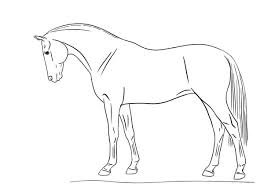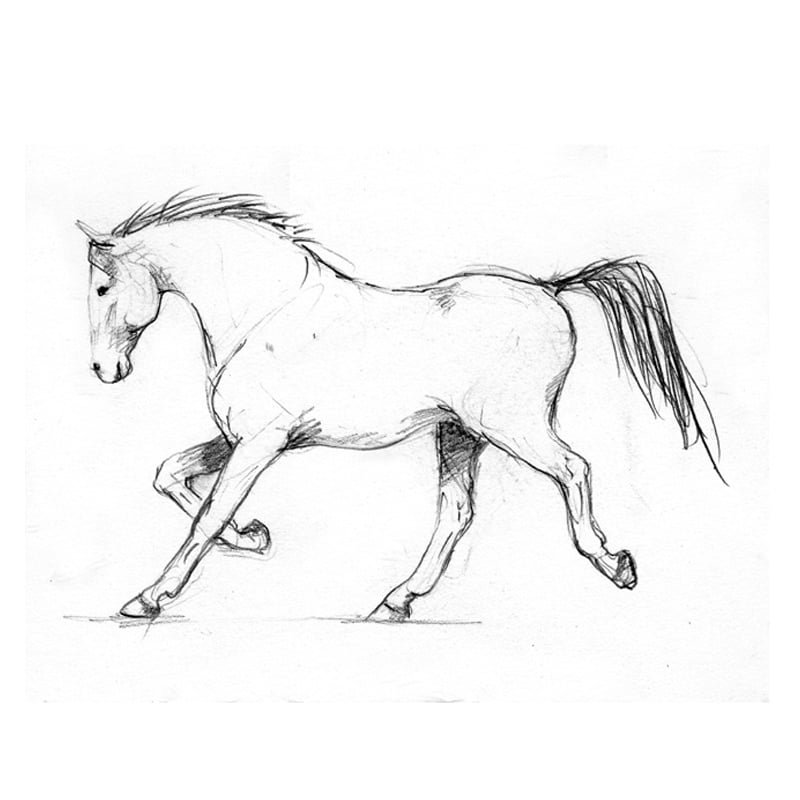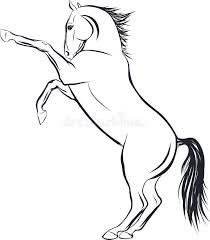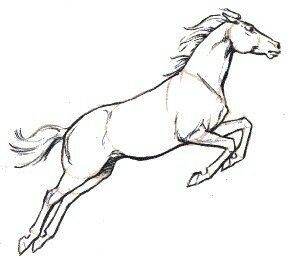Horses are amazing animals. They are strong, fast, and graceful. Drawing a horse can be tricky because of their complicated shapes and movements. But don’t worry! Quick horse sketches are a fun way to practice drawing horses without stressing over all the details. In this we’ll show you how to draw horses in just a few simple steps!
Why Quick Horse Sketches Are Awesome
Quick sketches are drawings that you make quickly, without worrying about perfect details. Here are a few reasons why quick horse sketches are great:
- Get Better at Drawing: The more you practice, the easier it will be to draw horses. Quick sketches help you improve faster!
- Don’t Worry About Perfection: When you draw quickly, you don’t have to worry about making everything perfect. You can just have fun and learn from your mistakes.
- Capture the Fun Movement: Horses love to run, jump, and play. Quick sketches help you capture all their awesome movement!
Different Horse Poses to Try
Horses can stand still, run fast, or even jump over obstacles. Here are some fun poses you can try in your quick sketches:
1. Standing Horse

A horse that’s standing still can still look interesting if you focus on how it’s standing. Is the horse looking around? Is it shifting its weight onto one leg? These small details will make your sketch feel alive!
2. Trotting Horse

Trotting is a fun, bouncy walk that horses do. In this pose, the horse’s legs are lifted in the air, and it looks like it’s moving gracefully. You can practice sketching the horse in mid-trot with its legs bending.
3. Galloping Horse

Galloping is when a horse runs super fast! The horse’s body stretches out, and its legs are high in the air. This is a very energetic pose, so try to show the horse’s speed with curved lines. Make the body long and show how the legs move.
4. Jumping Horse

When a horse jumps, it gets off the ground and arches its body. This is a fun pose to draw because the horse looks like it’s flying through the air! You can show the movement by drawing curved lines for the body and legs.
Tips for Drawing Horses Quickly
Quick horse sketches are all about capturing the essence of the animal. Here are some key tips to help you achieve the best results when sketching horses quickly:
Focus on Gesture Drawing
When drawing a horse quickly, gesture drawing is one of the most important techniques you can use. Gesture drawing involves creating fluid lines that capture the basic form, movement, and energy of the horse. The goal is not to worry about precise details or shading but to convey the horse’s posture, flow, and character. These sketches should be fast, no more than 30 seconds to a minute, and full of life. Keep the lines loose and free-flowing—this will help you represent the horse’s action and spirit.
Use Simple Shapes
To make quick sketches more manageable, break the horse’s body down into simple shapes. Horses have a relatively straightforward structure that can be represented with basic forms such as ovals, circles, and rectangles. For example:
- Head: A simple oval or elongated rectangle works well for the head.
- Torso: Draw the body with an oval shape, with the larger part representing the chest and the narrower section representing the hindquarters.
- Legs: Use lines or tubes to represent the legs, with small circles at the joints to show flexibility and movement.
- Joints: Circles or ovals at the shoulders, knees, and hocks help define the range of motion.
These simple shapes will help you establish the horse’s proportions and movement in a matter of seconds. Once you’ve got the basic structure, you can start to refine the details if you wish.
Prioritize Dynamic Poses
When sketching quickly, always focus on dynamic poses. Horses are known for their action—whether it’s galloping, jumping, or trotting. These poses are much more exciting and visually engaging than a standing horse, so prioritize them in your sketches. Capturing action will bring more life to your work, and focusing on the horse’s movement will make the process more enjoyable. Look for references of horses in motion to study and incorporate those dynamic poses into your quick sketches.
Keep Your Lines Loose
One of the defining characteristics of quick sketches is their looseness. Don’t worry about making perfect, smooth lines. Instead, use broad, energetic strokes that suggest the horse’s movement. The more free-flowing your lines, the more alive your sketch will feel. If you try to make every line precise, your sketch will lose the fluidity that makes quick sketches so effective.
Limit Time per Sketch
A great way to keep your sketches quick is to set a timer. By limiting yourself to 30 seconds, 1 minute, or 5 minutes, you can force yourself to focus on the core features of the horse without getting distracted by the finer details. Setting a timer challenges you to make quick decisions, which will help you improve your speed and intuition as you draw. Don’t worry about finishing the sketch; focus on capturing the essence of the horse within the time limit.
The Importance of Proportions in Quick Sketching
When drawing horses quickly, it’s crucial to get the basic proportions right, even though you may not be focusing on intricate details. Correct proportions allow your horse to look natural and realistic, even in a sketch.
A horse’s body is typically divided into three main sections: the head, torso, and hindquarters. Understanding how these sections fit together is essential for accurate proportions. The average horse’s body can be roughly divided into 2 to 2.5 head lengths, with the front legs being longer than the back legs.
By simplifying the proportions and breaking the body down into basic shapes, you can sketch the horse quickly while ensuring the proportions remain accurate.
How to Get the Proportions Right
Even though you’re drawing quickly, it’s important to make sure the horse looks like a horse! Horses have some key features that help you get the proportions right:
- Head: The horse’s head is smaller than the body but still needs to be big enough to show its face and neck.
- Legs: The front legs are usually longer than the back legs. This makes the horse look balanced.
- Body: The horse’s body should be long and round, like a big oval.
By using simple shapes and these tips, your horse will look right, even in a quick sketch!
Common Mistakes and How to Fix Them
Don’t worry if your quick sketches don’t look perfect. Here are some common mistakes that can happen when you draw horses and how to fix them:
The Legs Look Funny
Sometimes, it’s hard to draw horse legs because they’re long and bendy. If your horse’s legs look too short or too long, just remember that the front legs should be longer than the back legs. You can also break the legs into simple shapes, like tubes or lines, to make them easier to draw.
The Horse Looks Too Stiff
If your horse looks stiff, try to make the lines more curved. Horses move all the time, so try to capture the flow of their body. Use loose, curvy lines to show how the horse’s body bends when it walks or runs.
The Horse’s Head Looks Too Big or Small
The horse’s head should be small compared to its body. If the head looks too big, try making it a bit smaller. If it looks too small, make it a little bigger to match the body size.
Practice Exercises for Quick Horse Sketches
To get really good at quick horse sketches, you need to practice! Here are some fun exercises to help you get better:
1. Timed Sketches
Set a timer for 30 seconds and try to draw a horse in that time. Don’t worry about details—just focus on getting the horse’s shape and movement right!
2. Draw 3 Poses
Try drawing a horse in three different poses: standing, trotting, and jumping. Do it quickly! This will help you practice different horse movements.
3. Use Only Circles and Ovals
Try drawing a horse using only circles and ovals. This will help you practice drawing simple shapes and getting the horse’s body in the right position.
Fun Ways to Add Details Later
Once you get good at drawing quick horses, you can start adding more fun details to your sketches:
- Mane and Tail: Add some flowing lines to show the horse’s hair in the wind.
- Muscles: You can draw some curved lines on the horse’s body to show where its muscles are.
- Hooves: Draw small, triangle-shaped hooves at the end of each leg.
These little details will make your quick sketches even more exciting! To learn sketching try drawing other animals like cats, lions and birds.
Have Fun with Your Horse Sketches!
Drawing horses doesn’t have to be hard! By practicing quick sketches, you can get better at capturing their amazing movement and energy. Remember to keep it simple—start with basic shapes, focus on the horse’s pose, and have fun with the process. The more you practice, the easier and faster you’ll become!
Now grab your pencil and paper, and start sketching some awesome horses today!
